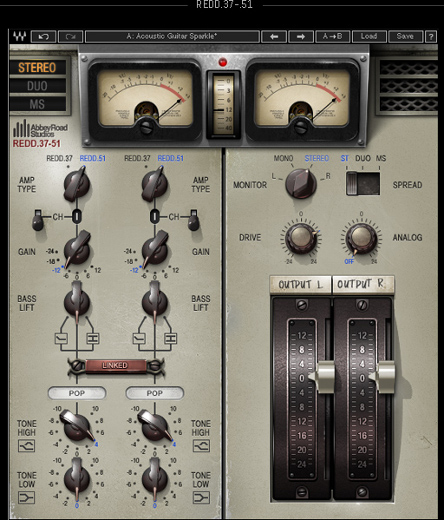Waves Launches REDD Consoles Plugins – Recreates Iconic Abbey Road Desks
Working with a piece of recording history just got a little easier.
Waves announced that its latest release is a painstaking recreation of the REDD consoles (named after Abbey Road Studios’ in-house Record Engineering Development Department) that operated within Abbey Road from 1957-1968 – a pivotal period in music when the facility hosted The Beatles, The Hollies, Pink Floyd and scores more.
Available now as a pair of Native plugins — the REDD .17 and .37-51 – it can be purchased at the Waves store for $199.
Here’s more information on REDD, as told by Waves:
“Renowned for their silky smooth EQ curves, extraordinary warmth and lush stereo imagery, there’s something magical about the REDDs that sound like no other consoles.
Waves meticulously recreated the color, character and tonal complexity of the original desks: The REDD.17 which still belongs to Abbey Road Studios, and the REDD.37 console now owned by Lenny Kravitz. The result is an impressive pair of plugins that deliver the dimension, depth and richness of these console classics.
FEATURES:
• Based on the legendary REDD.17, REDD.37 and REDD.51 consoles
• Delivers the classic British sound of the 1960s
• Continuous EQ controls
• Developed in association with Abbey Road Studios
CONTROLS:
• Amp Type determines the type of amplifier. (REDD .37-.51 only)
• Channel Select determines the channel configuration.
• Bass Lift controls the 9 dB low shelf that compensates for low frequency loss caused by using condenser microphones in a Figure 8 configuration.
• EQ Select toggles between Classic and Pop EQ types. The Classic treble EQ features a shelf boost or cut at 10 kHz; Pop EQ is a peak boost centered around 5 kHz, with a shelf cut centered at 10 kHz. Both Pop and Classic settings feature a continuous 10 dB of boost or cut at 100 Hz. (REDD .37-.51 only)
• Tone High controls high shelf equalization.
• Tone Low controls low shelf equalization.
• Monitor controls the source of the monitor output.
• Spread selects stereo processing mode. (Stereo component only)
• Drive controls the amount of drive added to the signal. Lower values result in a cleaner sound; higher values result in a more distorted sound.
• Analog controls the level of modeled noise and the hum.
• Output controls the output level of the signal.
• VU Meters display output VU readings.”
Please note: When you buy products through links on this page, we may earn an affiliate commission.







